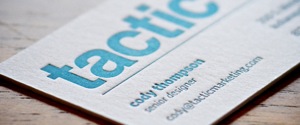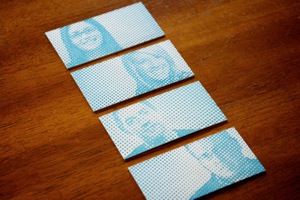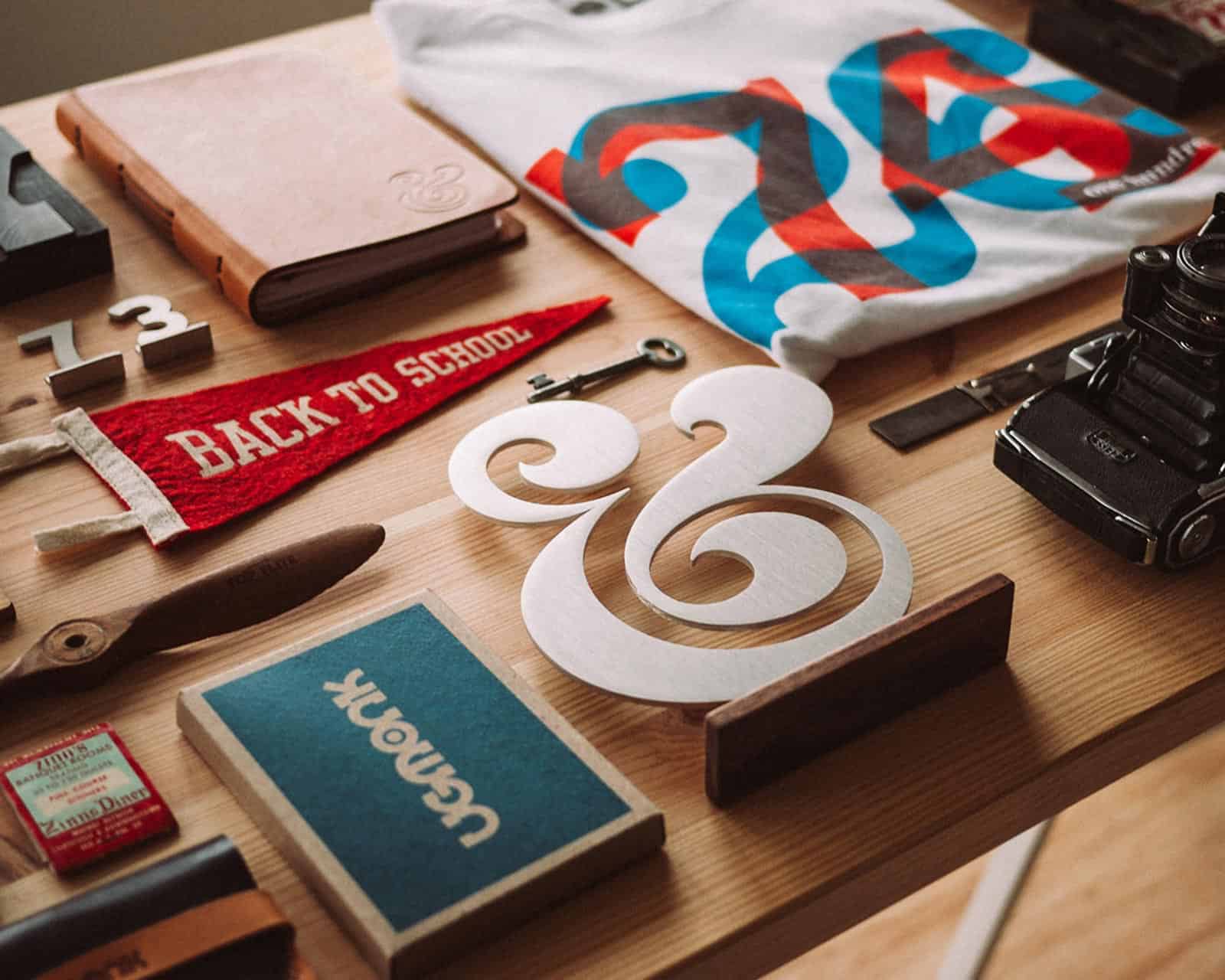I’ve had the good fortune of growing up when printing was “real.” It meant real lead type, machine stamped ink into paper. The blood, sweat and tears that went into building every page somehow made each page more believable, more real.
“Letterpress” printing died out in the late 60s, though today it is coming back in a big way. A year ago I saw letterpress printed holiday cards at Target, of all places. Boutique print shops are appearing across the country, as users of print grow to appreciate a look and feel that just can’t be duplicated on an inkjet printer, copier or even a commercial offset printing press.
Graphic designers and marketers are catching the real printing bug too. Like Indiana based Tactic Marketing who created this up to date take using classic technology.


Look closely and you’ll see that “stamped in” text, even in this small photo. This business card face features a traditional layout, though the back side plays on a halftone dot effect that features company staff in a striking and memorable way.
Sure, it’s possible to print business cards cheaper than this. Then again, who cares about ordinary looking, plastic-y feeling cards, when you want to position your brand in an extraordinary way?
Today, so much of what gets put in print (and for that matter online) qualifies as “me too” content. The sheer volume of it all induces a deep foggy haze on the reader. Yet, I’ve never once had a customer tell me “I’d like some ordinary looking cards.”
Yes, the internet has opened up printed products to price competition. Low prices tempt us into purchasing mass manufactured products that fit into standardized pre-press workflows and manufacturing processes. It makes for a sea of uniformity. Cheap, ordinary looking printing may be sending the wrong message to your fans and customers.
On the other hand, your communication in print can reflect the unique talents, skills and approach you bring to your business or art. Can that be done on a simple business card? Absolutely, yes! But it won’t happen by accident.






